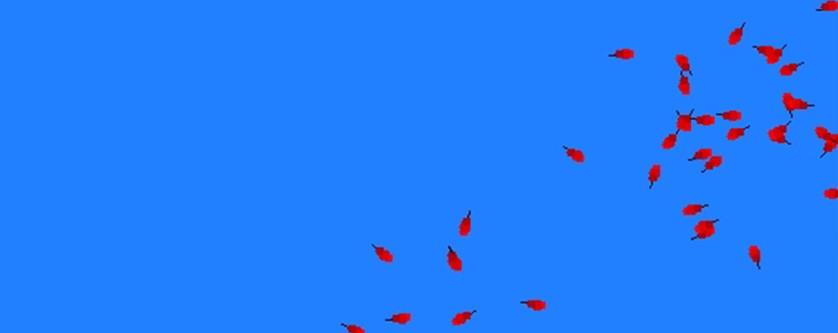Our Research Goal
The artificial intelligence boom recently has led to significant progress in areas, such as image recognition, but I feel that the road to artificial general intelligence is long one. Moreover, intelligence is not limited to the human brain. When we look at ecosystems, each organism, from unicellular organisms to mammals, is an intelligent system and the interaction of such diverse organisms facilitates a self-organized harmony. The entire ecosystem can also be viewed as a complex, intelligent system. Organisms and ecosystems are self-organized through local interactions, and they have been driven and have evolved autonomously while metabolizing energy and materials.
To truly understand such natural systems and further construct artificial intelligent systems that mimic living organisms, a fundamental understanding of the question “Through what process did living organisms originate?” is required. It is necessary to understand the process through which the first cells emerge and the process through which cells swarm to create more sophisticated systems. However, although many hypotheses have been proposed and extensive research has been conducted on the origin of life, the process of creating something that simultaneously fulfills the conditions of life remains unclear and the experimental synthesis of artificial life is not yet complete.
Alternatively, the development of a technology that can construct and further control complex systems, such as biological cells, in a self-organizing manner is one of the ultimate goals of mankind. The development of design engineering based on self-organization phenomena, which should be called “emergent engineering,” will enable the construction of sophisticated and complex mechanical systems of a level different from those of the existing systems. I believe that this will be the starting point for the next civilization, coming after the rise of industrial civilization with the invention of the steam engine.
To lay the groundwork for “emergent engineering,” my laboratory is studying 1) the emergence mechanism of the smallest cell (protocell), 2) the hierarchical morphogenesis mechanism of living organisms, and 3) the emergence mechanism of intelligent systems.
One of the main studies related to point no. 1) is a cellular automaton (CA) model, which combines the Turing pattern model with Conway’s Game of Life (Figure 1).
Figure 1. A self-replicating model that combines the Turing pattern model and Conway’s life game [1].
Furthermore, I developed a multiset artificial chemical lattice model that provides a more diverse representation than the CA model. As shown in Figure 2, I simulated a phenomenon in which cell-like boundaries are created, maintained, and self-replicated solely through virtual molecular diffusion, circulating reaction systems, and molecular polymerization, respectively. This demonstrated that except for the evolution ability, it is possible to create phenomena that meet the conditions of life.
Figure 2. Simulation of cell shape emergence by “multiset artificial chemical lattice model” [2].
Using these simulation models, the process of cell emergence through molecular interactions can be demonstrated. Furthermore, I aim to use this simulation model as the basis for a “biomicromachine design simulator.” In addition, by replacing virtual molecules with social elements, such as humans in society, it can be developed into a “design simulation of civilization and society.” Finally, by applying this model to emergent phenomena in neural networks, I hope to elucidate the mechanisms of the emergence of intelligent systems.
[1] Ishida, Takeshi, Possibility of controlling self-organized patterns with totalistic cellular automata consisting of both rules like game of life and rules producing turing patterns, Micromachines, 9, 339, (2018), https://doi.org/10.3390/mi9070339
[2] Takeshi Ishida, Emergent simulation of cell-like shapes satisfying the conditions of life using lattice-type multiset chemical model, arXiv:2204.09680, http://arxiv.org/abs/2204.09680

